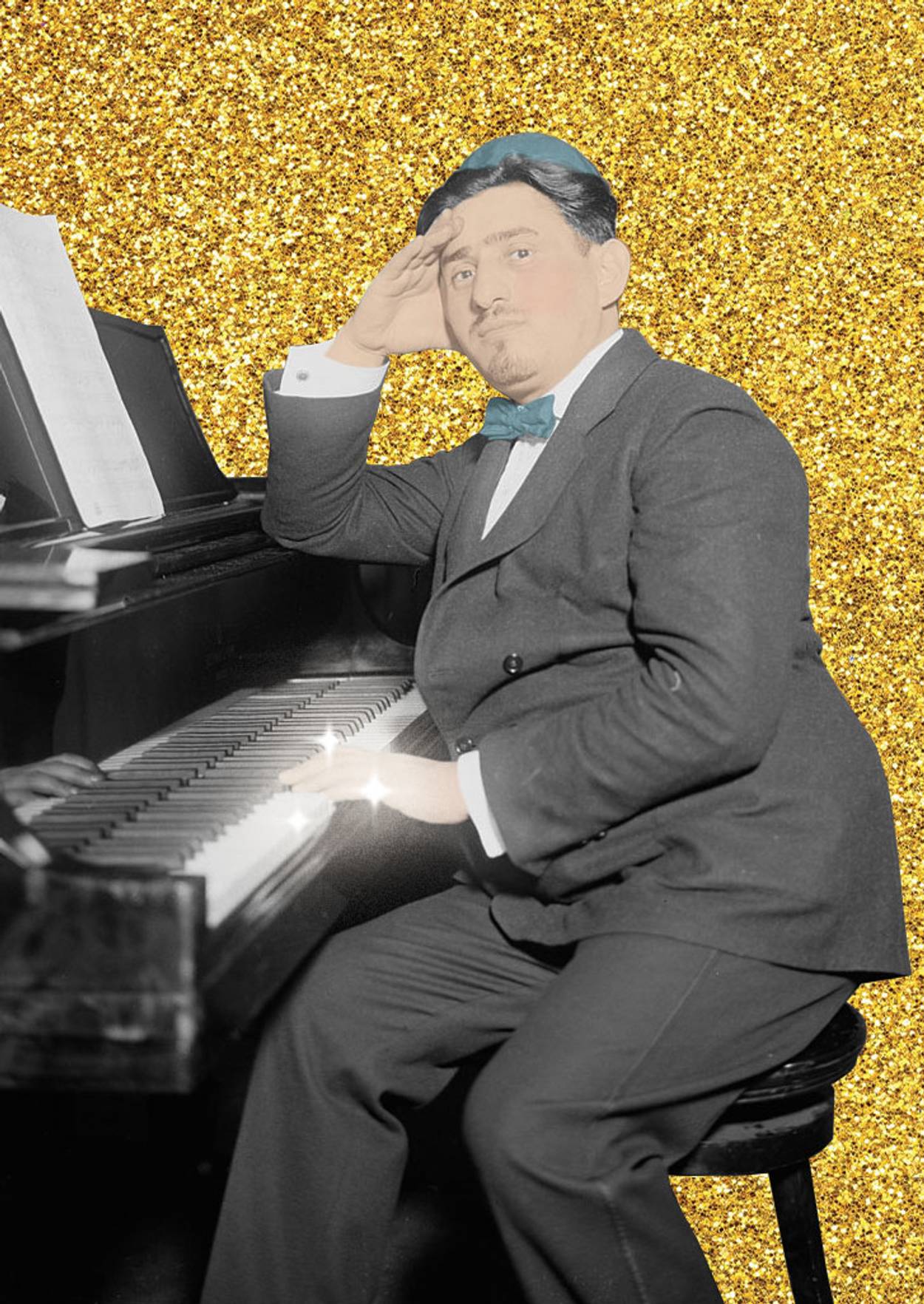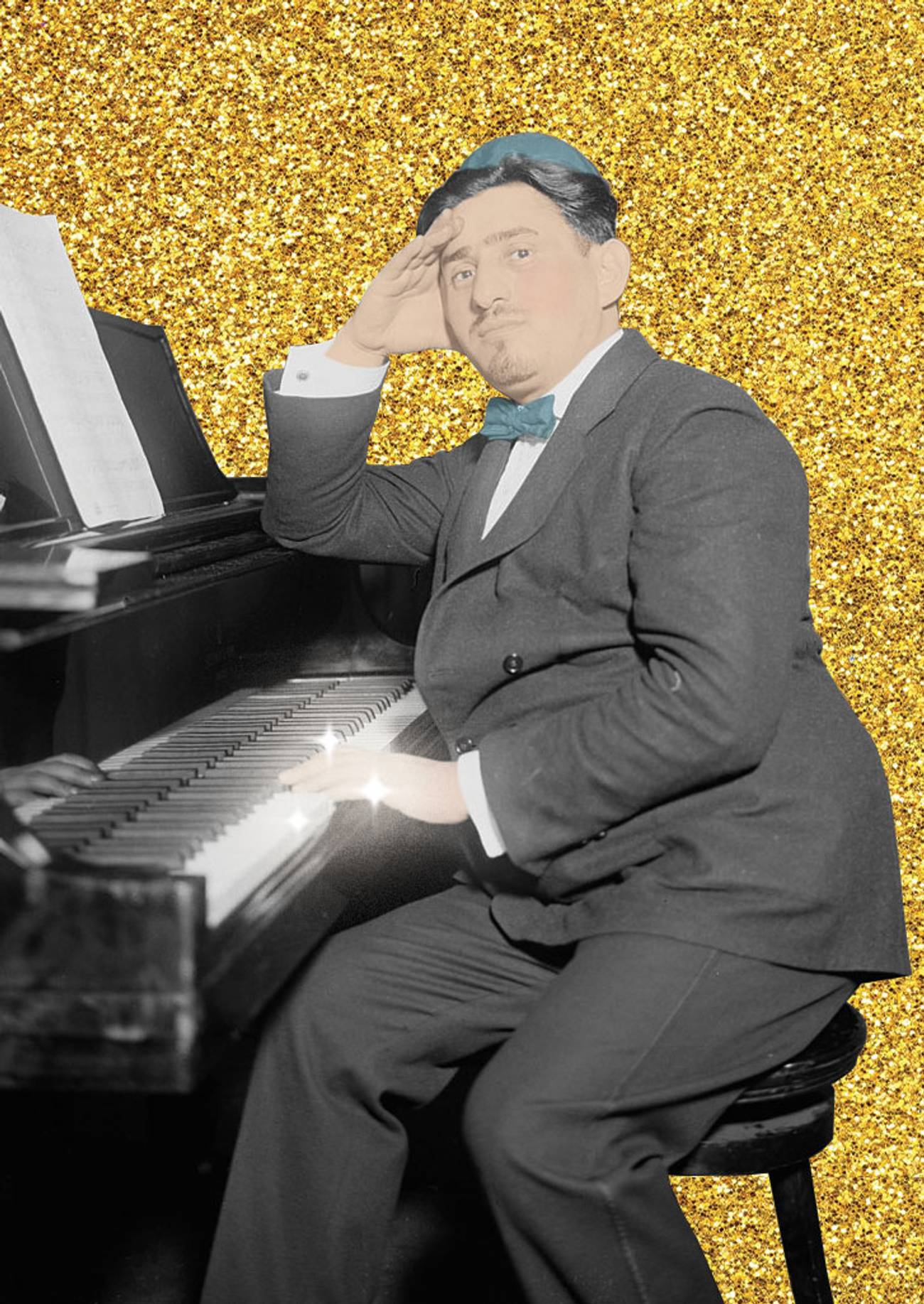Performing the High Holidays
As Zoom services shift synagogues’ ritual music from communal singalongs to performances, we can find inspiration in the cantorial superstars of a century ago




American Jews are facing a second year of High Holiday services online, or in a variety of in-person/streaming hybrid forms. Questions about how to conduct ritual without the physical presence of a community remains a pressing concern. Clergy and synagogue professionals today tend to think of communal participation in prayer as an unquestioned good—and a goal of services. But after a year and a half of living synagogue life mostly on Zoom, the category of “participation” is in need of closer analysis.
The shift to the livestream as the main form of social gathering sharpens the question about what it means to “participate” in prayer. In the contemporary American synagogue, performance and participation are often assumed to be opposites. Zoom services are, by necessity, performances to be watched and heard, much like a television broadcast or a stage show. But is listening really a passive experience? For me, this is mostly a rhetorical question—anyone who has been moved by live music knows that the heightening of the senses and quickening of the mind that occur in response to hearing one’s own emotions mirrored by a great artist on stage can easily affirm that listening, too, is participatory.
Since technologically mediated performances—i.e., Zoom services—are still in demand as the main format for communal ritual as the pandemic continues, how can we balance prayer and performance? Here, in this Zoom moment, we may have something to learn from the cantors of an earlier era, when the disruptive new technology was not the computer but the gramophone.
Beginning with the first commercial recordings of cantors in 1901 by Selmar Cerini—followed in close succession by the first international stars of Jewish music, Gershon Sirota and Zawel Kwartin—the sounds of synagogue prayer found a new context: the home. Sirota and Kwartin emerged from a context in which cantorial music was, for Jewish audiences, popular music. In late-19th-century Europe, cantors toured for much of the year, often accompanied by choirs made up of young boys, fostering a culture of competition and creativity as cantors vied with one another to compose the best music and lead the most impressive choirs. In the major metropolises of Eastern Europe, a musical style emerged in the “choir shuls” that catered to the economic and intellectual elite, offering a synthesis of older styles of Jewish prayer chant with the most contemporary sounds of Western art music and elements of pop culture. The commercial competition and success of cantors reached a new level in the gramophone era, as cantors developed international followings, packed major concert venues, and sold hundreds of thousands of records.
In the cantorial “golden age,” associated with the era of the gramophone recording stars and lasting roughly from 1901-50, cantors were alternately celebrated and denigrated for their artistry and their commercial successes. Sirota and Kwartin were lambasted as a corruption of tradition by an elder cantor, Pinchos Minkovsky of Odessa, who claimed that their records provided the soundtrack for barroom brawls and brothels. Yossele Rosenblatt, today primarily memorialized reverently as a paragon of cantorial piety for having turned down an offer to sing for the Chicago opera, was lambasted in his day for appearing in vaudeville, sharing bills with performing dogs and burlesque dancers. Other cantors, such as the suavely handsome Mordechai Hershman and the exuberant showman Moishe Oysher, were criticized for being notoriously nonobservant.
In this period, cantorial stars were the main attraction of the Sabbath and holiday services for many Jews. “Star” cantors were featured in “mushroom synagogues” that cropped up overnight, staged in theaters just in time for Rosh Hashanah, serving ad hoc communities for whom the artistic aspects of ritual music were a primary motivation for observing holidays. For subsequent generations of cantors, the excellence and artistry of this generation of cantorial artists served as the model of excellence and artistic achievement to be aspired to. Even after the folk-pop liturgy revolutions of the 1970s, spearheaded by singer guitarist liturgists such as Shlomo Carlebach and Debbie Friedman, cantorial training continues to foreground the musical style and formal presentational concept of prayer-leading. This dynamic has fostered an ongoing contentious debate about what kinds of sounds are appropriate for the synagogue. In one popular viewpoint of the cantorial profession, rehearsed in numerous articles in the Journal of Synagogue Music and repeated by cantors ad infinitum, cantors have lost authority over the synagogue soundscape.
Early-20th-century cantorial stars produced an exceptional body of music on record that is celebrated by fans of the genre as an apex of Jewish sacred music but has lost its resonance as a broadly popular genre. In today’s synagogue, “presentational” cantorial styles, focused on solo vocal performance, are heard as being old-fashioned or are simply unknown and foreign. While the gramophone-era cantorial style has been largely rejected in contemporary synagogue life, the golden age style has been embraced by a small cadre of Jewish musicians, especially in the Hasidic community. This is surprising because cantorial music was traditionally rejected by the Hasidic world as excessively concerned with aesthetics and entwined with the culture of non-Jews. But today, in the work of young stars of the cantorial world such as Yanky Lemmer, the aesthetic-oriented approach of old-time cantors has been adopted as a model of Jewish artistry.
While the golden age cantorial music style is rarely heard today in most synagogues, conceptions about who drives the synagogue experience and the appropriate role of art in ritual are still in flux and subject to debate. The question of whether services are supposed to be based in participation or performance is a particularly live issue after a year of Zoom services that tacitly embraced the performative nature of the synagogue service.
For many synagogues, this means that services designed to encourage congregational singalongs have been transferred onto a solo performance texture, accentuating the sad absence of community and the aesthetic paucity of the musical material used for prayer. Anyone who has spent any time in synagogue Zoom services is surely familiar with the depressing spectacle of a moderately talented singer trying to stage a singalong to an empty room. In contrast, other communities have embraced the challenge of the Zoom service as an opportunity for artistic experimentation and have invested time and resources in creating high-production-value musical performances for their services. The highly professional service videos created by the Hamptons Synagogue or B’nai Jeshurun are models of musical skill and thoughtful integration of technology. However, while the latter, big-budget productions may draw larger audiences, they come off as situationally specific performances and do not necessarily resolve larger questions about the appropriate role of performance in prayer.
After nearly 50 years in which the participation model for the music of the American synagogue has become the norm, it is unclear what kind of music is desired in the synagogue, and whether there is an appetite for charisma-based artistic performances by professional artists. The question of performance versus participation also raises questions about what kinds of musical styles are available to construct a service. At the moment, with the classic cantorial style largely out of fashion, the question of participation and performance inevitably raises questions about what kinds of musical styles are deemed legitimate for worship but are also aesthetically appealing, and who gets to make decisions about the soundscape of the synagogue.
As a scholar of Jewish music and a professional musician, these are not theoretical questions for me. This year is the 10th anniversary of Because Jewish, an independent Jewish community without a brick-and-mortar synagogue space that produces High Holiday services every year in music venues. I have served as High Holiday music director for the community since the beginning, bringing the idiosyncratic approach to classic cantorial sounds that I developed with my band, The Sway Machinery, into the service. My highly performative approach to liturgy, inspired by the golden age cantors but retrofitted with a world-class rhythm section, has been embraced by a loyal following and supported by boosters including Mike Greenhaus, the editor of popular music magazine Relix and de facto president of the community.
During the pandemic year, Because Jewish community services, like so many others, moved online. But unlike most Jewish communities, the digital services boasted a surprising roster of guest artists from the world of popular music, appearing in videos from around the country that have been added to the presentation. While the presence of musical guest stars certainly accentuated the performative, concertlike orientation of the proceedings, the participatory folk-pop Jewish musical style had a booster from an unlikely corner: the brilliant rock song writer Jeff Tweedy of Wilco. Tweedy’s contribution to the Yom Kippur service consisted of a performance of Debbie Friedman’s Mishebeirach, accompanied by his two adorable teenage stepsons, leading a singalong that would be at home in the most conventional liberal movement congregation. (Tweedy’s conversion to Judaism was the subject of an outrageously deadpan funny NPR story segment a few years back.) While Friedman’s music is not an easy fit with my idea of Jewish sacred musical performance, the fact that her iconic song for healing is performance-ready in the repertoire of one of the most famous Jews in contemporary music is suggestive of the pervasiveness of her aesthetic in the culture of prayer.
This year, Because Jewish services will offer a hybrid of in-person and online presentations, but Rosh Hashanah will take place at Brooklyn Bowl, one of the borough’s finest music venues, just as it did in the years before the pandemic. While the juxtaposition of the High Holidays and a rock club setting may seem like a surprise to some, I imagine the setting as an echo of the early 20th century, when cantors would rent out major theaters and stage services structured around their performances. For gramophone-era cantors and their audiences, being moved by the talent and inspiration of artists was perceived as a desirable part of Jewish religious life.
We have lived through a year when an older format of prayer services that was dependent on performance has been demanded again by the exigencies of quarantine and made possible by the new technologies of video conferencing. While it is still unclear what innovations, if any, will remain permanent from the year gone past, it is certain that the skills of Jewish artists will be needed to navigate the changes ahead in a way that brings feeling and meaning to the communal endeavor of prayer.
Jeremiah Lockwood is the leader of the band The Sway Machinery.